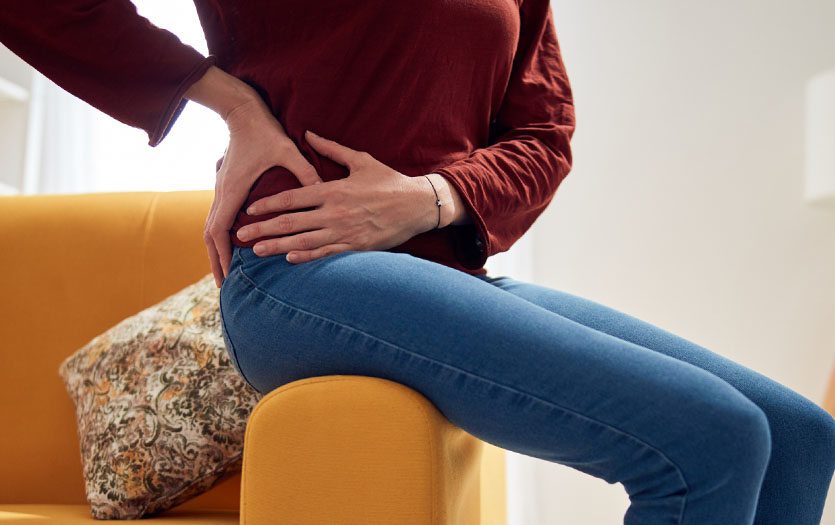
Constipation in children is a very common issue. The National Institute of Health (NIH) estimates that almost 1 of every 20 visits children make to a doctor is because of difficulty having regular bowel movements. Samuel Boston, MD, PPG – Pediatric Gastroenterology, briefly reviews the common causes and symptoms of the condition and the details of a new treatment option for pediatric patients struggling to find relief.
What are the common causes of constipation in children?
While there are numerous reasons a child may become constipated, some of the most common causes include:
- Nutrition – A diet low in fiber and high in processed foods can contribute to constipation in children.
- A lack of exercise – Children who are not physically active may not have regular bowel movements and are more likely to become constipated.
- Stool-withholding behavior – Children may hold in their stool or avoid having bowel movements for various reasons, such as not wanting to use public restrooms or being too busy with other activities, which can result in constipation.
- Medications – In some instances, certain medications (pain relievers, antidepressants, and antihistamines) can cause constipation as a side effect.
- Medical conditions – Some medical conditions, such as irritable bowel syndrome, hypothyroidism, and celiac disease, can cause constipation in children.
- A lack of water in the body – During bouts of dehydration, the colon removes more fluid than usual from the stool, resulting in harder and dryer stools.
What are some signs and symptoms that a child may be constipated?
If a child is constipated, they may exhibit some common warning signs and symptoms, including:
- Infrequent bowel movements
- Difficulty/straining to pass stool
- Painful bowel movements
- Passing stool that is hard, dry or lumpy
- Fecal incontinence or signs of soiling
- Abdominal pain, bloating or discomfort
- Loss of appetite, which can include nausea and vomiting in some cases
What are some methods for the prevention and treatment of constipation in children?
Mild cases of constipation can be prevented and treated with better hydration and increased fiber. Moderately severe cases require a combination of osmotic laxatives (which trap water in the stools) and stimulant laxatives (which cause the colon muscles to contract harder and faster). Almost all constipated patients could benefit from scheduled toilet time and knee elevation when sitting on the toilet.
When should parents or caregivers reach out to their child’s doctor?
You should consult your child’s physician if constipation isn’t responding to good hydration, diet changes, fiber supplements and/or proper positioning on the toilet. Your pediatrician will likely be able to help with recommendations for over-the-counter or prescription laxatives and possible next steps.
At what point would a child be referred to a specialist for constipation?
Your child’s pediatrician may want to consult a pediatric gastroenterologist if there is evidence of blood in their stool, if they have lost weight, if they have trouble keeping food and drink down, if there is significant belly distention or if your child’s abdominal pain is interfering with regular daily activities.
What is anal Botox?
Pediatric anal Botox® involves the injection of a neurotoxin called Botulinum Toxin Type A (Botox) into the anal sphincter muscles of children suffering from chronic constipation. Botox is a muscle relaxant that temporarily paralyzes the muscles and reduces their spasticity, which can help relieve the symptoms of constipation. A growing body of evidence supports using Botox injections to treat chronic constipation in children. Several studies have shown the safety and efficacy of this treatment option, and the results have generally been positive.
For example, a review article published in the Journal of Pediatric Surgery in 2019 analyzed the results of several studies and reported on 881 children who received Botox injections. The authors found that the injections effectively improved symptoms such as bowel movements, fecal incontinence and abdominal pain, and were generally well-tolerated with few adverse effects. Overall, while further research is needed to fully understand the long-term efficacy and safety of Botox injections for constipation in children, the available evidence suggests that this treatment option can help improve symptoms and quality of life in those who have not responded to other treatments.
When would anal Botox be recommended for a patient?
If a child has not responded to other treatments (laxatives, behavioral interventions, dietary changes, etc.), pediatric anal Botox injections can be an effective treatment option for chronic constipation. Anal Botox injections may also benefit children with pelvic floor dysfunction, a condition in which the muscles that control bowel movements do not work properly. Other indications for pediatric anal Botox injections may include:
- Fecal incontinence – Some children with chronic constipation may also experience e an involuntary passage of stool. Botox injections can help to reduce accidental bowel leakage by relaxing the muscles in the anal sphincter.
- Painful bowel movements – Children with chronic constipation may experience discomfort during bowel movements, leading to reluctance to eliminate waste. Botox injections can help to reduce muscle spasticity and make bowel movements less painful.
- Anal fissures – Chronic constipation can also cause small tears in the skin around the anus, known as anal fissures. Botox injections can help to reduce muscle stiffness and promote healing.
It’s also important to note that providers may recommend pediatric anal Botox injections only after other treatments have been exhausted and unsuccessful.
How is anal Botox administered in the treatment of constipation?
The injections are performed under sedation or general anesthesia in a hospital setting and typically take around 15-20 minutes to complete.
Is anal Botox an option for children at any age?
While no strict guidelines for age exist, I have traditionally only done this procedure for patients over the age of 3.
Are there any side effects associated with anal Botox treatments?
There are some risks associated with the procedure, such as infection or bleeding, so discussing the potential benefits and risks with a qualified healthcare provider before considering this treatment option for your child is crucial. Some rare risks include urinary incontinence, pelvic muscle paresis, perianal abscess, pruritis ani and rectal prolapse.
Final thoughts
It’s important to note that anal Botox injections are not a permanent solution for constipation. Additional treatments, such as daily osmotic and stimulant laxative treatment, diet changes, scheduled toileting practices, behavioral therapy, etc., will be necessary for several months. Generally, insurance coverage varies depending on the individual insurance plan, the specific circumstances of the child’s condition and if other treatments have been unsuccessful.
If you have any concerns about your child’s digestive or gastrointestinal health, please speak with their pediatrician or primary care provider. They can help you determine if a referral to PPG – Pediatric Gastroenterology is necessary.



